The devaluation of the ruble has had serious problems for the contractors who are building new stadiums for the world football championship in 2018. Forced to adjust the budget in favor of domestic materials developers are not able to replace all the components, and therefore, risk to build the facilities at a loss. Two years ago a similar situation with the Sochi Olympic facilities has already led to the departure of two large companies — NGO “Mostovik” and “Inzhtransstroy”. But now to think about the future and have regions where the infrastructure may be unclaimed.
A year and a half, and in the summer of 2017, will take place football matches of the confederations Cup. Actually this is a rehearsal of the world championship, which is scheduled for 2018. According to the preliminary plan to host the first tournament has four platforms — the Moscow stadium “Open arena”, Sochi, the “Fisht”, “Kazan arena” and Petersburg “Zenith” (work on the last of them is still far from complete). Six months later, after carrying out of matches in the confederations Cup in use should be put new stadiums in Kaliningrad, Saransk, Samara, Nizhny Novgorod, Volgograd and renovated arena in Ekaterinburg. Most of these sites work has just begun, since developers have agreed on estimates only in the autumn of last year. And faced with my first unpleasant surprise.
The government decree on the appointment of contractors for the construction of stadiums was published on the website of the Ministry of sport in April 2014. The document determined that the construction in Nizhny Novgorod and Volgograd will “Stroytransgaz” Gennady Timchenko, Samara and Saransk production and construction Association (DCA) “Kazan” Ravil Ziganshina, in Kaliningrad and Rostov-on-don, Russia — Crocus Group Aras and Emin agalarovy. Reconstruction of the arena in Yekaterinburg was transferred to the company “Sinara-development” Dmitry Pumpyansky. In September of the same year was selected and the contractor for the reconstruction of Sochi “Fisht”, construction management (SMU) “Krasnodar”, controlled by ex-official of administration of Krasnodar Yuri kleschenko. Others included in the program of the 2018 world Cup facilities — “Open arena”, “Luzhniki” and “Zenith” was built on private funds or funded by local authorities.
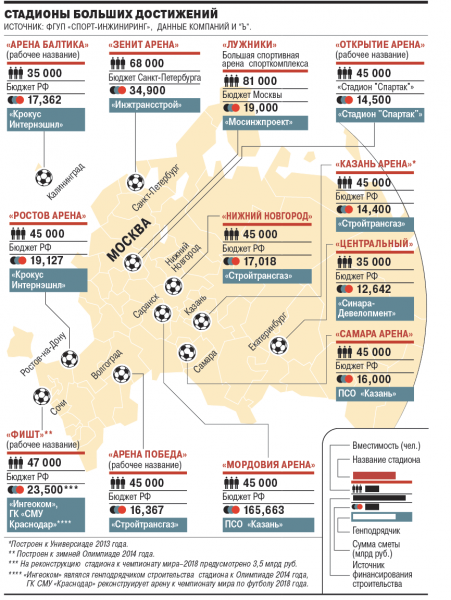
Made using
LEARN MORE
Dear Petersburg
The most expensive sports facility for the 2018 world Cup will be St. Petersburg “Zenit arena”. Its contractors are pre-bankrupt JSC “Inzhtransstroy” and completing all work LLC “Inzhtransstroy SPb”. Both companies belong to the group “Transstroy”, which is the owner of “Bazel” Oleg Deripaska gave it to his classmate Egor Andreev. Given the recent decision of the Smolny allocate an additional 435 million rubles due to the devaluation of the ruble the cost of the project exceeds 38 billion rubles: 35,34 billion rubles will be spent on the main estimates, another 2.9 billion rubles have been allocated to the contractor at the unit entrance area. As stated earlier, the curator of the project, the General Director of “Glavstroy” (also included in “basic element”), Kirill Polyakov, the difficulties relate to inflationary pressures, which complicates further the technological equipment of complex engineering equipment. Another problem, he said, is to ensure that the General contractor under the current contract is working in prices 2013-2014.
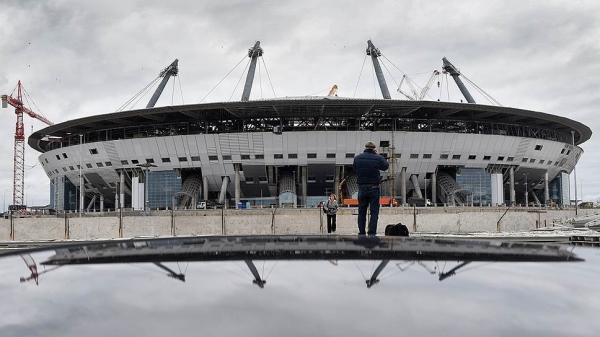
Photo: Alexander Koryakov / Kommersant
“Zenit Arena”. October 2015
Initially, the project on construction of “Zenit Arena” was not associated with preparation for the 2018 world Cup: the work, begun in 2007, was supposed to be finished in 2009, but the timing was postponed eight times, and in 2013 the stadium was included in a government decree regulating the preparation for the world Cup in 2018. The arena is planned to be completed until the end of 2016, ready for the beginning of February was 82%. “We don’t have trouble or problem situation with the stadium in St. Petersburg, in March, must take all decisions and have the confidence that St. Petersburg can handle it”,— explained earlier, the Minister of sport Vitaly Mutko. But the control-audit chamber (KSP) St.-Petersburg in the end of January stated that there were risks of failure of the works on time. According to the report of the Ministry, in 2015, certain types of construction work was carried out with a considerable lag from the plan, contractors have not mastered 590 million rubles in the budget of the city appropriation has not entered into contracts with subcontractors for the sum about 1,6 billion rubles., and in separate premises defects that affect the quality of the finish, serviceability and durability of building structures. Contractors permitted deviations of the parameters of the object from the design documentation before making changes, coordinated with Glavgosexpertiza, concluded the Commission. But the claims Board is not only a problem of “Zenith”.
One of the main contracts with the General contractor, which was to be completed by 15 December 2015, suspended until 30 June 2016, the volume is not put it works is 3 billion rubles, the state argues that the suspended work on the $ 277 million rubles is Not built by the end of last year, against a schedule input area. At the end of January the Governor of St. Petersburg Georgy Poltavchenko has created a headquarters to coordinate the completion of the stadium for the world Cup with the participation of the Ministry of internal Affairs, FSB, the Ministry of sports and FMS. Its main objective will be to “preparation of proposals and resolution of issues related to the completion of the construction of the stadium”.
The history of the world Cup
<iframe src=”<a href=” http:=”” <a=”” href=”http://cdn.knightlab.com” rel=”nofollow”>cdn.knightlab.com=”” libs=”” timeline3=”” latest=”” embed=”” index.html?source=”1JQjmFWJ5t4orymdKUY2KdYtxangzNntdgdxdww6dfzu&font=Default&lang=en&initial_zoom=2&height=650″” rel=”nofollow”>http://cdn.knightlab.com/libs/timeline3/latest/embed/index.html?source=1JQjmFWJ5t4orymdKUY2KdYtxangzNntDGDXdWw6dfzU&font=Default&lang=en&initial_zoom=2&height=650″ frameborder=”0″ width=”100%” height=”650″></iframe>
Losses in the currency
The final estimates of the other stadiums are much more modest: from about 3.5 billion rubles, as, for example, the cost of the reconstruction of the Sochi “Fisht”, to 19,12 billion roubles— so much, according to the Federal state unitary enterprise “Sport-engineering” the state customer of the construction of all stadiums for the 2018 world Cup, relies on the arena in Rostov-on-don (see map). The approval process the cost of the facilities was carried out in parallel with the coordination of the documentation from the FAA “Glavgosexpertiza Russia”. According to the condition of contracts entered into “Sport-engineering” with the contractors, the estimated cost will not change, says the source “b” familiar with a course of conducting works.
Co-owner of Crocus Group Aras Agalarov calls the situation unprecedented. In his view, to enter the approved budget is now a very daunting task for any contractor. “The cost of building one is about $200 million in FIFA history this has not happened. For comparison, the average price of building similar facilities in Brazil previously hosted the world Cup, was $400 million, despite the fact that climatic conditions in the country are more favourable than ours,” explains Mr. Agalarov. But there is another position. Thus, according to the representative of the group Intecs (built the stadium “Kazan arena” for summer Universiade in 2013, is part of the Summa group of Ziyavudin Magomedov), the average cost of building a stadium which meets the requirements of FIFA, usually consists of the calculation $5 thousand for one spectator. Based on this formula the stadiums in Kaliningrad and Yekaterinburg should cost the budget about $175 million, or 13.5 billion rubles at the current exchange rate. Construction in Rostov-on-don, Kazan, Saransk, Volgograd and Nizhny Novgorod — $225 million (about RUB 17.3 billion).
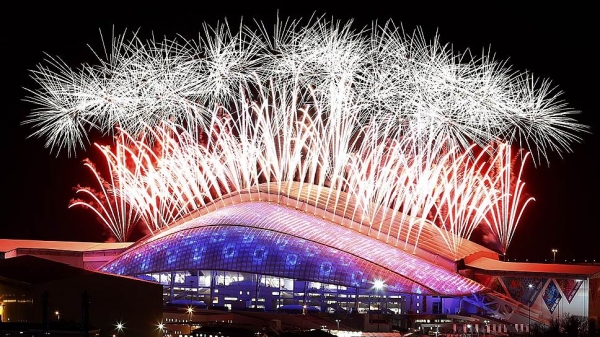
Photo: Reuters
The Fisht stadium during the closing ceremony of the Olympics
One of the main problems contractors construction of stadiums — a sharp increase in the cost of imported materials amid the devaluation of the ruble. Their share in the total estimate for construction of stadiums for FIFA requirements can range from 5% to 20%, says a representative of Intex. For example, the stadium in Kazan the equipment and materials of foreign production amounted to 5-6% of the total construction cost. “It all depends on the configuration: concrete, rebar, steel structures, we have everything you need for the construction of the main structure of the facility, purchased in Russia. Foreign equipment is used for technological engineering and toppings — football field lighting, sound, equipment for video streaming, security,” lists the source of the “Kommersant”. According to him, import of technological equipment and materials in the majority do not have Russian analogues: list the names of forms and claims to FIFA before the design of the object, and “Sport-engineering” as the building owner expects the purchase to reduce the cost, receiving wholesale prices. With this thesis agrees and Mr. Agalarov, citing as an example the requirement for installing FIFA stadiums sport Philips lighting. In other cases, if not fixed brand supplier, established technical limitations, making purchases from domestic suppliers impossible, he adds.
Similar calculations lead head of practice “Infrastructure” of the “neo Centre” Eugene Mazur. The main problem, in his opinion, the rise in price of imported from abroad engineering machinery and equipment special systems: their cost is 30-40% of the price of the entire project. “Especially now, with all this rose twice”,— the expert added. Based on these calculations the total cost of the project was to gain a third. In this second problematic factor Mr. Mazur calls increased with inflation, the cost of local building materials — such as gravel and sand.
To reduce the costs that arise after the approval of budget of the project in case of force majeure, can only be achieved by constructive solutions, says the representative of Intex. “Stroytransgaz” agree that on the background of a sharp devaluation of the ruble the cost of some equipment had increased by 40-50%. “If you do not do optimization, the cost overruns on the total cost estimate may be 10-15%, now we are finalizing the program of optimization decisions”,— specify in the company. Half of them aimed at import substitution or selection of unique other, more efficient manufacturers, including European, Chinese, explained the representative of “Stroytransgaz”. In a press-service of the company “Sinara-development” to “Kommersant” explained that she initially focused on domestic materials. “We have the ability during construction to make changes in the documentation, in case they are agreed with the customer or pass the state examination,”— said the representative of the company. In the group of companies “SMU Krasnodar” and PSO “Kazan” declined to comment.
The most expensive stadiums in the world
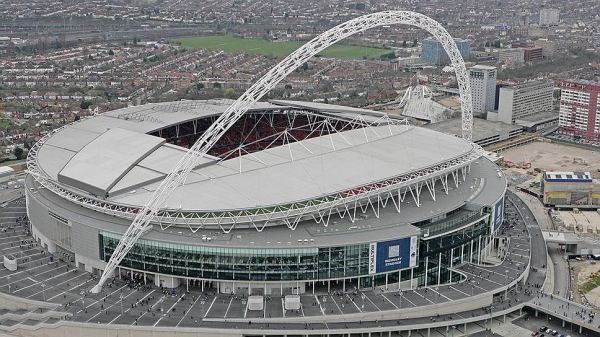
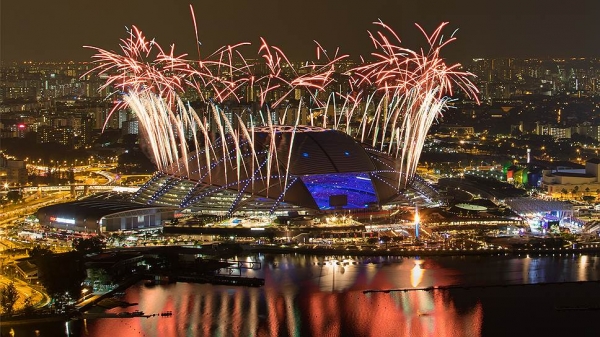
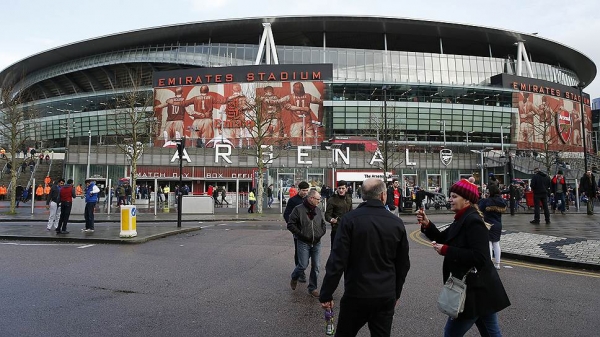
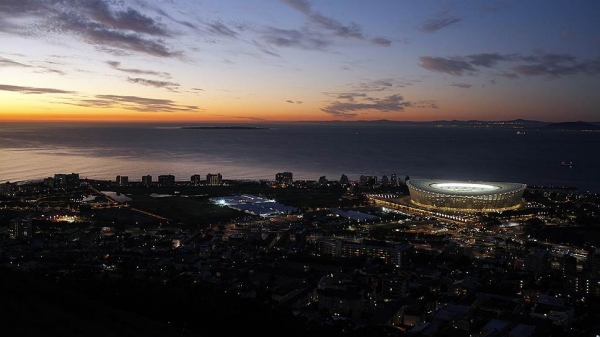
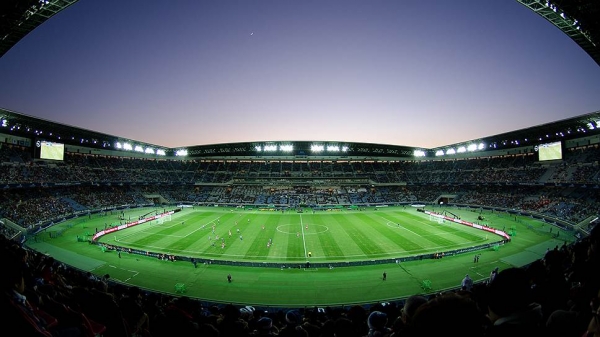
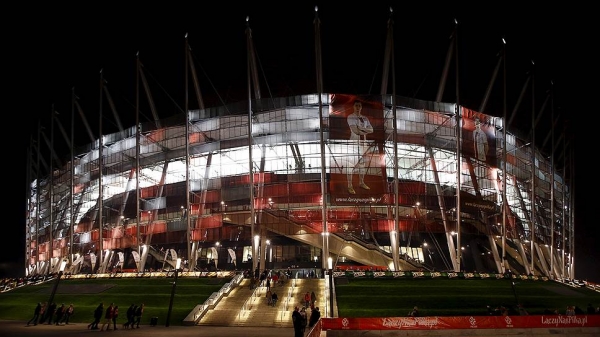

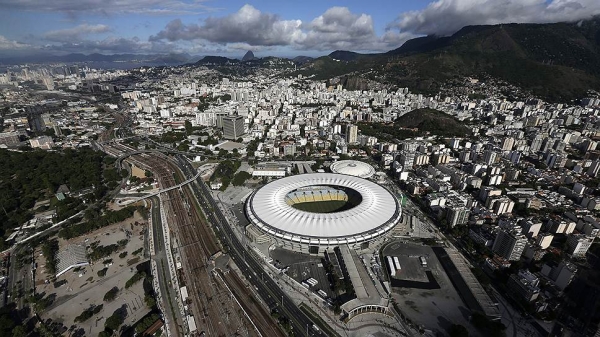
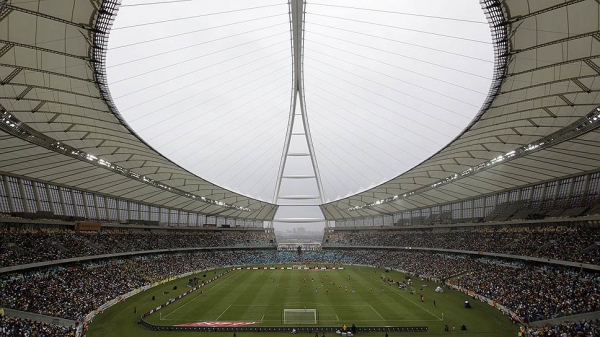
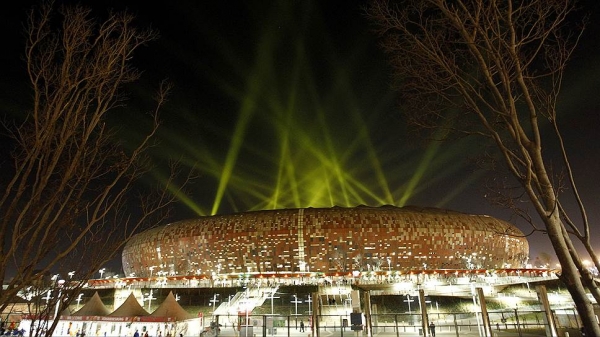
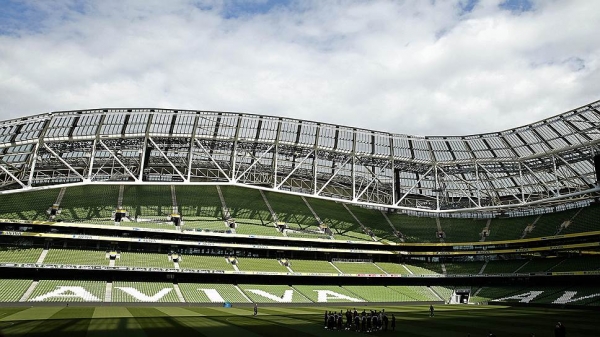
The Wembley Stadium / Wembley Stadium
City: London (UK)
Capacity: 90 thousand people
Year built: 2007
Construction cost: $1.4 billion
Description: the arena was built on the site of the demolished in 2003, the namesake of the stadium. The authors of the architectural project was made by Foster & Partners (UK) and Populous (USA). The opening of “Wembley” was held on 24 March 2007: here was the match of youth teams of England and Italy. The stadium also hosts concerts.
Photo: Action Images / WNSL / Reuters
Building at a loss
The growth of prices in the construction market in any case, affect the profit of the General contractor, which typically is 5-15% of the cost of the work if the contract price is fixed and does not imply additional compensation, says Mr. Mazur. Interviewed by “Kommersant” the General contractors involved in the construction of stadiums, leave answers to the question of the rate of profit. As explained to Kommersant one of the participants of the construction on condition of anonymity, to make money on these sites the business just will not succeed. “But I don’t know any company (from among the contractors involved.— “Kommersant”), which itself took the initiative to participate in the project,” he says.
In Russia, the experience of building large infrastructure projects to the detriment of the contractors already had. So one of the main outcomes of the preparation for the Sochi Olympics in 2014 for the construction market was the departure of the two largest independent players. The owner stated liquidation in March 2014 the company “Inzhtransstroy” Yefim basin linked to the financial problems of the business with the appreciation of two of the Sochi facilities: during the construction of the biathlon track has increased in price by 512 million rubles, and the cost of engineering services in the Imereti lowland — 949 mln. “Inzhtransstroy” was the contractor of these facilities, the company failed to compensate for the lost funds. In August of that year, a statement of its own bankruptcy filed Omsk NPO “Mostovik” — contractor bobsleigh track and the Large ice arena for hockey. In comments to Forbes anonymous employees estimated the losses from the construction of the highway is 2.5 billion rubles “When applying to the then existing regulatory framework the cost of the works in Sochi, we were anticipating a profit of 3-5%. But the project had to change, and the state artificially — regulatory reduced cost of operations, and actual cost of works and materials has grown. All this has led to huge losses Mostovik and other contractors to Sochi,” recalled in an interview with “Vedomosti” the former co-owner of the company Oleg Shishov. The fate of the businessman, too, was unsuccessful: in November 2014 he was charged with the embezzlement of 1.1 billion rubles in the construction of an Oceanarium in Vladivostok. Now the case is in court, the sentence of Mr. Shishov is pending.
— Assessment of stadiums and their readiness is carried out by technical experts hired by local organizing Committee (LOC). This assessment includes regular monitoring and periodic reports submitted to FIFA. We and LOC during routine contact with 11 cities hosting the championship. Occur regularly coordination meetings and visits to venues, special attention is paid to the four cities that will host the confederations Cup.(full interview)
<cite>— Colin Smith, Director of FIFA competitions</cite>
However, the interlocutor of “Kommersant” familiar with the progress of the funding of stadiums to a world Cup doubt that the Sochi issue and will again this time. “Yet here we are talking about principally other companies, he argues.— I don’t think any of them will leave the market, even if will suffer in the framework of this project the loss.” Technically his words were confirmed by the experience of the Crocus Group. After the construction of the additional objects for far Eastern Federal University to the summit of the Asia-Pacific economic cooperation the company is officially estimated losses of more than 1 billion rubles, but did not stop activity.
Earn conduct themselves at football matches and to compensate for at least a minimum of losses is unlikely. According to the Vice-President of football club “Spartak” (home stadium of this team — “Open arena”) Nailya Izmailova, rent venues to host matches is not paid at all: all proceeds from ticket sales, broadcast and sponsors are also sent to FIFA. Co-owner of “Spartak” and Vice-President of LUKOIL Leonid Fedun was the only private investor in the project of construction of stadiums for the 2018 world Cup.
Empty stands
But the lack of allocated funds is not the only problem of the future of the championship. After the world Championships many regions have to independently resolve issues with continued use of the built infrastructure. “Many regions now do not understand the fate of these stadiums, meeting with leaders of the regions in which there is a construction, that every time I see the wonder and hear suggestions about the management of these stadiums,” notes nail Izmaylov. Thus, according to him, to solve the problem, just finding a management company, local authorities are unlikely to succeed. This is a big problem for the whole Russian football, agrees managing Director of the online publication “Cempionatam” Dmitry Sergeev.
<iframe id=”fitvid312393″ src=”<a href=” https:=”” <a=”” href=”http://www.youtube.com” rel=”nofollow”>www.youtube.com=”” embed=”” 7Y-GToPoHkI”=”” rel=”nofollow”>https://www.youtube.com/embed/7Y-GToPoHkI” frameborder=”0″ width=”320″ height=”240″></iframe>
Video: Georgi Ustinov
According to the expert, the average attendance of one match last season amounted to 10.4 thousand people — which is 20% lower than two years earlier. By estimates of mister Sergeeva, Kaliningrad “Baltic” it is difficult to collect even a 14-seat stadium and average attendance team in the Football national League (FNL) — 4,5 thousand people per game. In Sochi and Volgograd clubs-level FNL in principle no, but the stadium “Luzhniki” none of the Metropolitan clubs will not use, because they all have, or will built their home arena, he adds. Slightly better is the situation in cities where there are teams of the Russian football Premier League (RFPL). The matches come in Ekaterinburg, on average, 6 thousand, in Samara — 11.5 thousand, in Saransk — 5,9 thousand spectators, the results Mr. Sergeyev. “A lot of times heard the opinion that the new stadium will increase attendance almost automatically, but this statement is disputed: big new facility will increase maintenance costs, will have to raise ticket prices, and it is unlikely to contribute to the growth of number of fans,” he said.
— The deadline for most arenas is set for November-December 2017. Turns out that on stadiums allotted an average of 36 months of construction. Then we will have six months to conduct test matches. According to the requirements of FIFA prior to the opening of the championship and the confederations Cup in each stadium must pass at least three games with the full load of the object.(full interview)
<cite>— Alexey Sorokin, the General Director of the organizing Committee “Russia-2018″</cite>
The ability to change the situation Mr. Izmailov sees to pass the stadiums in the management of soccer clubs, and regional officials to work on popularizing local teams. “For now we need to work on the attractiveness of the regional team in the eyes of their fans, to work on attracting people to the stadium, to work with young people, with families and children,” he says. Mr. Sergeev believes that the problem is more global: “Officials can only do one thing to try to reform the current state of the Premier, to reconsider the strategy of its development and thereby begin to increase the involvement of Russians in football. If in the country there will be new fans, this infrastructure will be unnecessary,” he explains. However, Mr. Sergeyev agreed with the idea that stadiums can be transferred to the management of local teams. According to current concepts, the clubs in the future will have to take these sites to rent. “It complicates the building of relationships with fans: the profit in any case can be obtained only if there is an audience with which to work. In our case, this audience is virtually nonexistent,” says Mr. Sergeev.
- 2
- 0
- 2
- 1
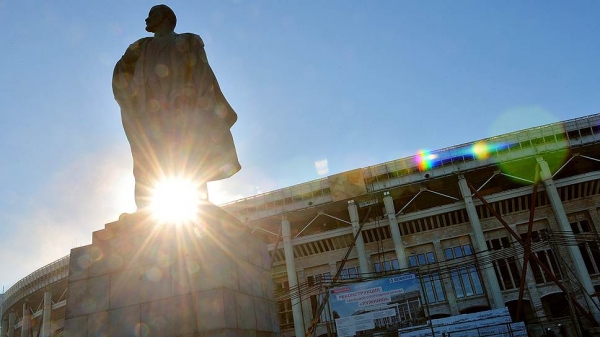

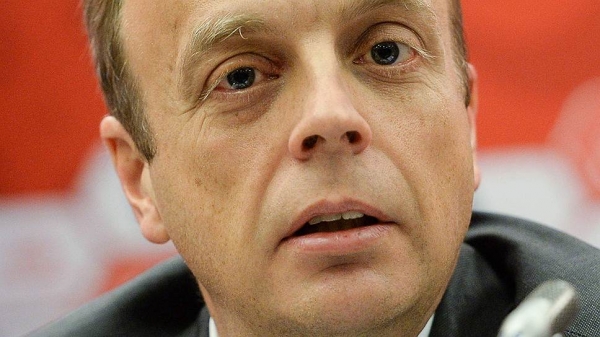 — Assessment of stadiums and their readiness is carried out by technical experts hired by local organizing Committee (LOC). This assessment includes regular monitoring and periodic reports submitted to FIFA. We and LOC during routine contact with 11 cities hosting the championship. Occur regularly coordination meetings and visits to venues, special attention is paid to the four cities that will host the confederations Cup.(full interview)
— Assessment of stadiums and their readiness is carried out by technical experts hired by local organizing Committee (LOC). This assessment includes regular monitoring and periodic reports submitted to FIFA. We and LOC during routine contact with 11 cities hosting the championship. Occur regularly coordination meetings and visits to venues, special attention is paid to the four cities that will host the confederations Cup.(full interview)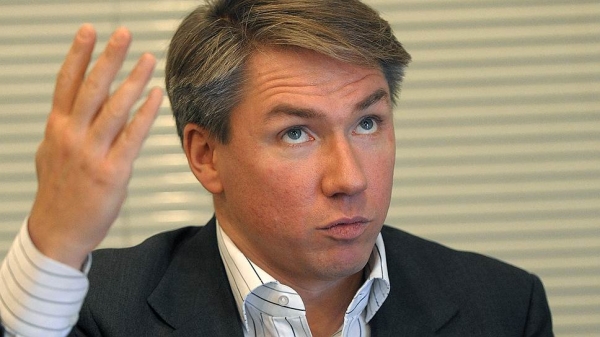 — The deadline for most arenas is set for November-December 2017. Turns out that on stadiums allotted an average of 36 months of construction. Then we will have six months to conduct test matches. According to the requirements of FIFA prior to the opening of the championship and the confederations Cup in each stadium must pass at least three games with the full load of the object.(full interview)
— The deadline for most arenas is set for November-December 2017. Turns out that on stadiums allotted an average of 36 months of construction. Then we will have six months to conduct test matches. According to the requirements of FIFA prior to the opening of the championship and the confederations Cup in each stadium must pass at least three games with the full load of the object.(full interview)






